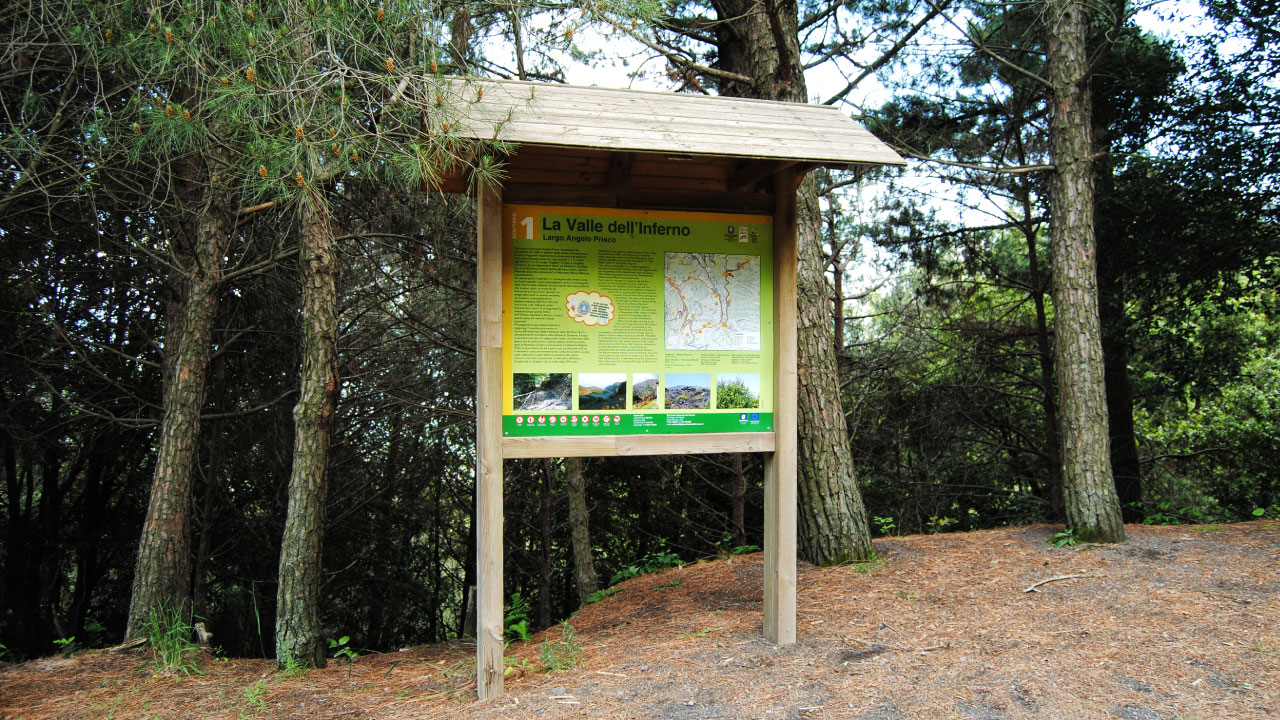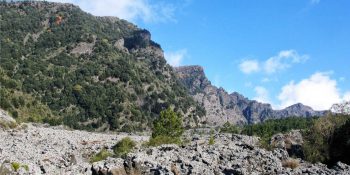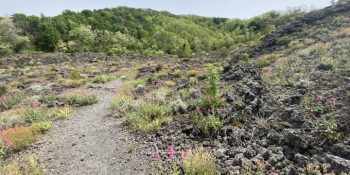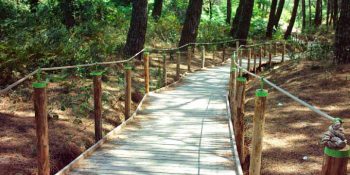The most beautiful places and the most representative environments of the protected area
The access is located 4 kilometres away from the centre of Ottaviano, along the road that leads from the village towards Mount Somma. Moving away from the town, you can admire on the left the splendid Medici Palace, which, dating back to the Middle Ages, has undergone subsequent renovations until it became the current Renaissance noble residence.
Belonging to the Medici family from 1567 until the Italian unification, in the 80s it ended up in the hands of organized crime; confiscated by the State and returned to the city of Ottaviano, today it houses the headquarters of the Vesuvius National Park and a Centre for Environmental Education.
In addition to the great cultural and social representativeness, the Palace also has a considerable importance from a naturalistic point of view; besides some ancient examples of Sequoia and Yew in the historical gardens, the attic of the Palace hosts some breeding colonies of rare bats such as the Greater Horseshoe Bat and the Geoffroy’s Bat.
The route starts with some asphalted hairpin turns and then continues with a dirt path, which crosses a stone pine wood and then a mixed forest of chestnuts, Italian alders and maples, holm oaks and black locusts. This is one of the richest and most valuable environments for the animal species that houses, especially some birds, like the woodpeckers, whose echo and drumming accompanies the visitor.

Please be extremely careful on the trails, always check weather conditions and wear appropriate shoes.
The Park Authority has no competence for safety and so it is not responsible for any damage to people and things that may occur during the use of the Park territory.
After the first uphill section, in common with path n. 2 “Lungo i Cognoli”, you reach a first widening, called Largo Angelo Prisco, to commemorate the homonymous financier assassinated by the poachers in 1995. From this small space carved between brooms and conifers, the plaque dedicated to the memory of Prisco marks the separation between paths n. 1 and 2.
On the left, the wood is enriched by the presence of the Italian alders and the itinerary continues in alternation between shady stretches and more open and sunny stretches, until you arrive at a large open space invaded by pyroclastic deposits, dominated by the sudden vision of the volcano.
This area is completely immersed in the colours of the fields of brooms that you can cross on the left. The journey is an experience of intense emotions, you’re enveloped in the smell of the yellow flowers while enjoying the vision of the lava dome of 1937 and the eccentric eruptive mouths formed between the 19th and the 20th centuries.
The end of the broom thicket coincides with the middle destination: the path is rejoined to Strada Matrone, but if you continue to climb towards the next turn, take the dirt road to the right, which runs parallel to the slopes of the Gran Cono along Valle dell'Inferno, where you subsequently arrive with a deviation on the right, descending the steps or turning to the Imbò Refuge.
The emotions become more intense as you cross the environments of the Maquis scrubland surrounded by majestic walls and lava rock spires, where you can find rupicolous birds such as the common raven, the very fast peregrine falcon and the rarest common rock thrush, a little passerine with bright colours.
At this point the trail rejoins with path n. 2 “Lungo i cognoli” and, after crossing the valley, it begins to climb along the Cognoli of Levante. During the journey, it is possible to see, touch and enter the molded tunnels, like a whim of fire, from the most recent ropy lava, almost surprised by the cooling during its flow.
Continuing along the path, accompanied by pleasant panoramic views, you reach the widening again, from which you proceed backwards to Largo Angelo Prisco and from here to the starting point, which represents the destination route.


Visit the other paths

The trail network is in overall redevelopment and maintenance and some paths may not be equipped with signs. Contact the Park Authority for more information.

The Valley of Hell
Path N. 1 - The most beautiful places and the most representative environments of the protected area.

Along the Cognoli
Path N. 2 - The most beautiful and wild scenery of Somma-Vesuvius.
![]() Nature trail towards Somma Vesuviana temporarily closed
Nature trail towards Somma Vesuviana temporarily closed

The Mt Somma
Paths N. 3 - This fascinating ring route leads to Punta Nasone, which with its 1,132 metres is the highest peak of Mount Somma.
![]() Nature trail from Somma Vesuviana temporarily closed
Nature trail from Somma Vesuviana temporarily closed

The Tirone Reserve
Path N. 4 - The track is located within the Tirone-Alto Vesuvius Forest Reserve, which covers about 1,000 hectares.

The Great Cono
Path N. 5 - A guide to visit the Crater of the Vesuvius.

The Matrone Road
Path N. 6 - The path corresponds to the ancient road traced by the Matrone brothers to go back to the Gran Cono from the side of Boscotrecase; …
![]()
Closed nature trail where maintenance

The Profica Valley
Path N. 7 - The itinerary, which is known as the “agricultural path”, winds along the slopes of the lesser known side of Mount Somma, the …
![]()
Closed nature trail where maintenance

The Rack Railway
Path N. 8 - The itinerary follows the historical route for the ascent of Mount Vesuvius from the town of San Sebastiano to the foot of the hill …
![]()
Closed nature trail where maintenance interventions will be introduced

The River of lava
Path N. 9 - Thanks to this itinerary, you can experience the thrill of walking on a lava flow, surrounded by an almost lunar landscape.

The Olivella
Path N. 10 - The itinerary retraces the Olivella path, which climbs through the countryside of Sant'Anastasia and leads to the homonymous springs, …
![]()
Closed nature trail where maintenance

Terzigno Pinewood
Path N. 11 - The path is flat and is inside a thick pine forest, designed for pleasant walks and for people with limited difficulties.


